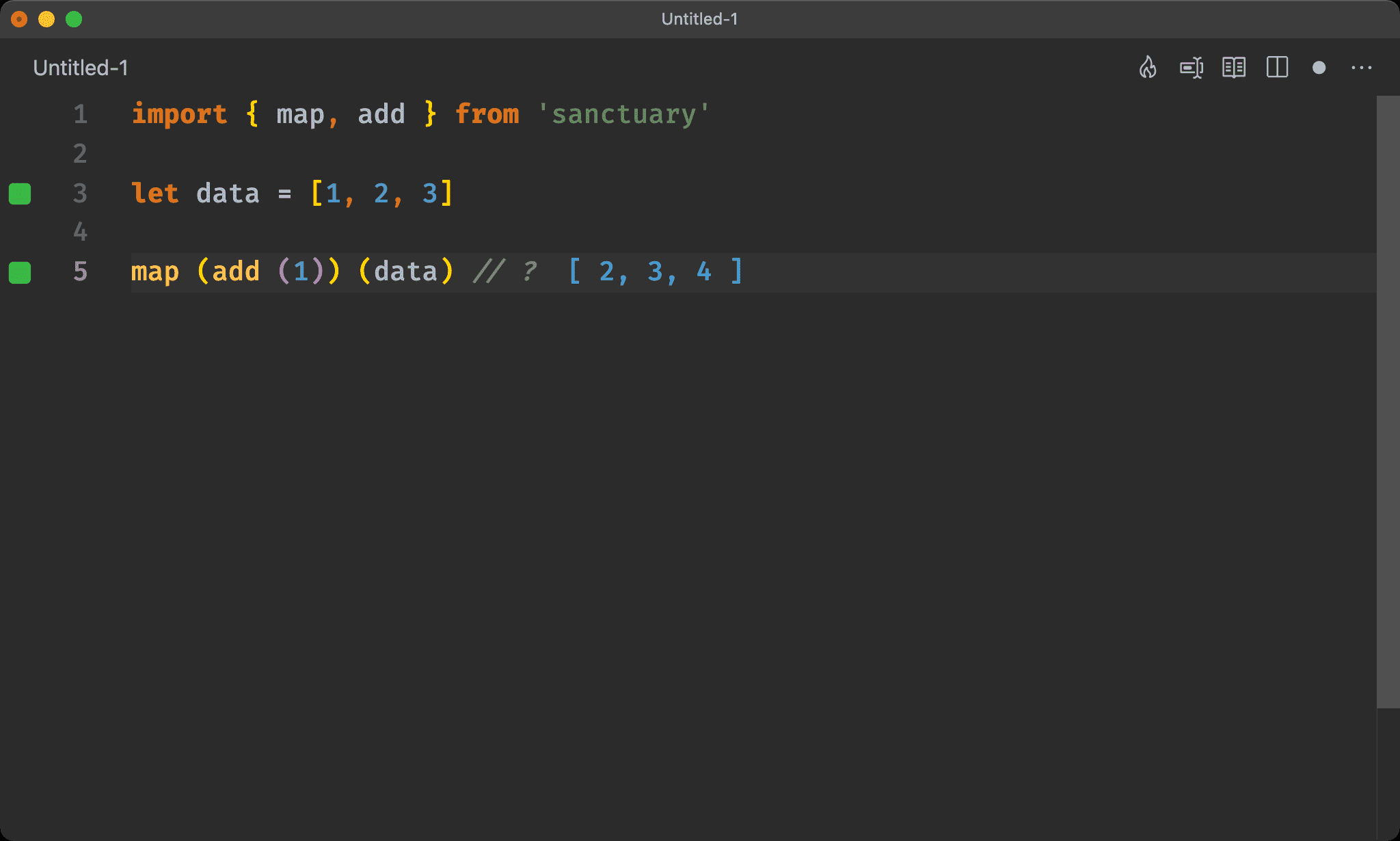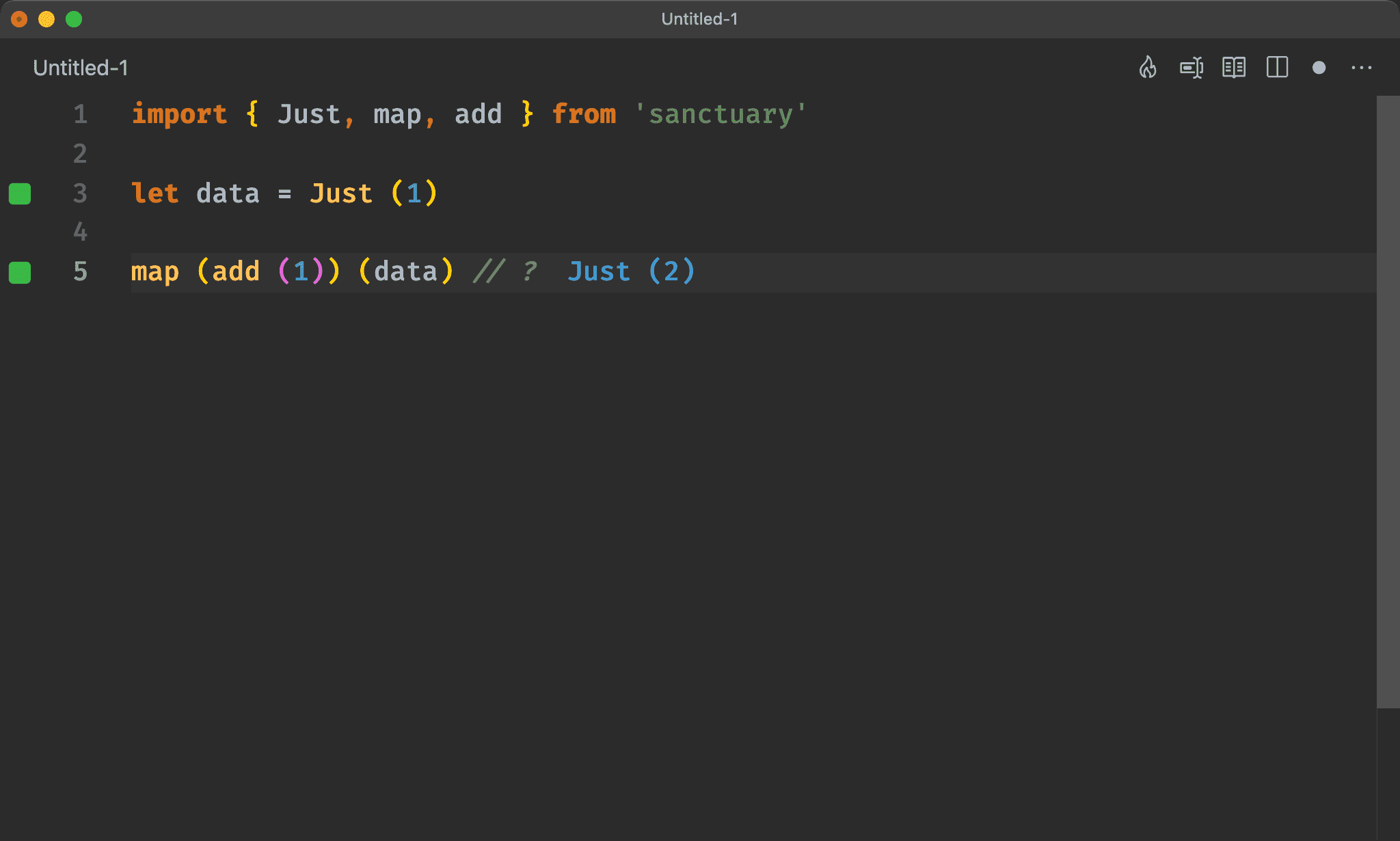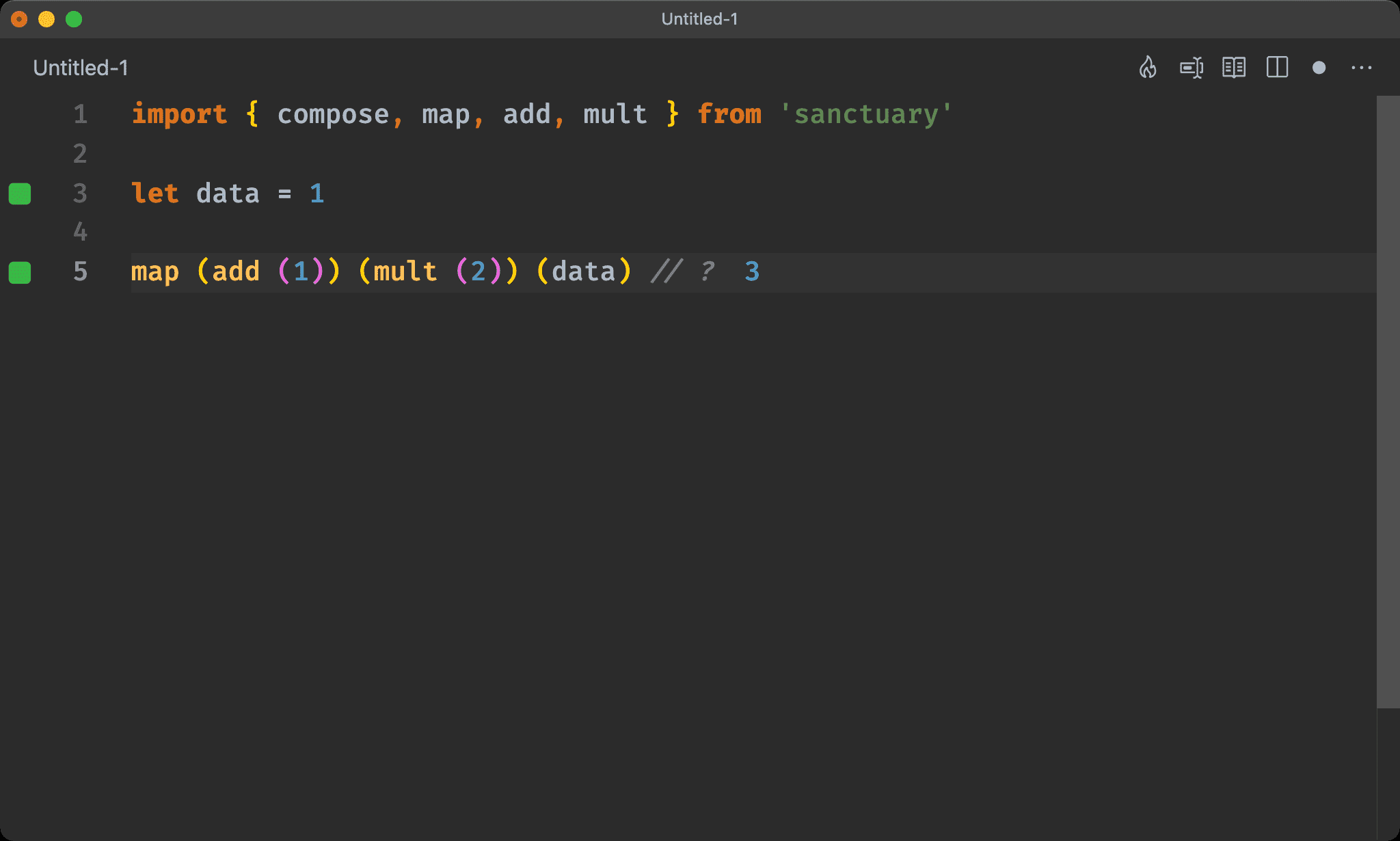map 是 FP 最重要 Function,若以不同觀點來思考 map 就會有不同結果:除了本身的 map 外,還可當成 lift 與 compose 使用。
Version
Sanctuary 3.1.0
map
import { map, add } from 'sanctuary'
let data = [1, 2, 3]
map (add (1)) (data) // ?
map :: Functor f => (a -> b) -> f a -> f b
(a -> b) -> f a:將a -> b與f a綁定f b:回傳新f b
這是最典型的 map,將一般 function 與 Functor 綁定後,改變 Functor 並會傳新 Functor。

lift
import { Just, map, add } from 'sanctuary'
let data = Just (1)
map (add (1)) (data) // ?
map :: Apply f => (a -> b) -> f a -> f b
(a -> b):一般 functionf a -> f b:回傳接受 Apply 並回傳 Apply 的 function
Apply 也必須實現 Functor,因此 Apply 也可使用 map。
這也是為什麼 Sanctuary 有提供 lift2 與 lift3,卻沒有 lift 或 lift1 原因,因為 map 亦可當 lift 使用。

compose
import { compose, map, add, mult } from 'sanctuary'
let data = 1
map (add (1)) (mult (2)) (data) // ?
map :: Functor f => (a -> b) -> f a -> f b
(a -> b):一般 functionf a:data 為 Functor,但因為 function 也是 Functor,f a可想成x -> af b:回傳新 Functor,相當於x -> a與a -> b組合,f b相當於x -> b
此時 map 相當於 compose。

Conclusion
- 由於
map是 curry function,因此類似文言文一樣,標點標在不同地方就有不同意義,除了原本map外,亦可當成lift與compose使用